After Sumdho, the road begins a subtle ascent past sulfurous hot springs and grasslands with salt lakes that bring in gulls, black necked cranes, and other migratory birds. I was looking out the left hand side of the jeep when I saw a young boy all alone on the plains. Initially I was alarmed at such a prospect, until I turned to the other side and saw that we’d arrived at the village of Puga. Puga is another seasonal camp of Tibetan nomadic refugees. Tents lie along a rutted strip of asphalt that eventually crosses a high pass leading to Tso Kar Lake, where we’ll head in the next post.
Along with my two traveling companions, we stopped in the village to discuss future first aid training through a local non-government organization, http://www.mountainleadership.org. Through it all I was able to continue documenting some of the daily life of these nomads.

A young boy on the Tibetan plateau

Gulls feed at a high altitude lake on the Tibetan plateau
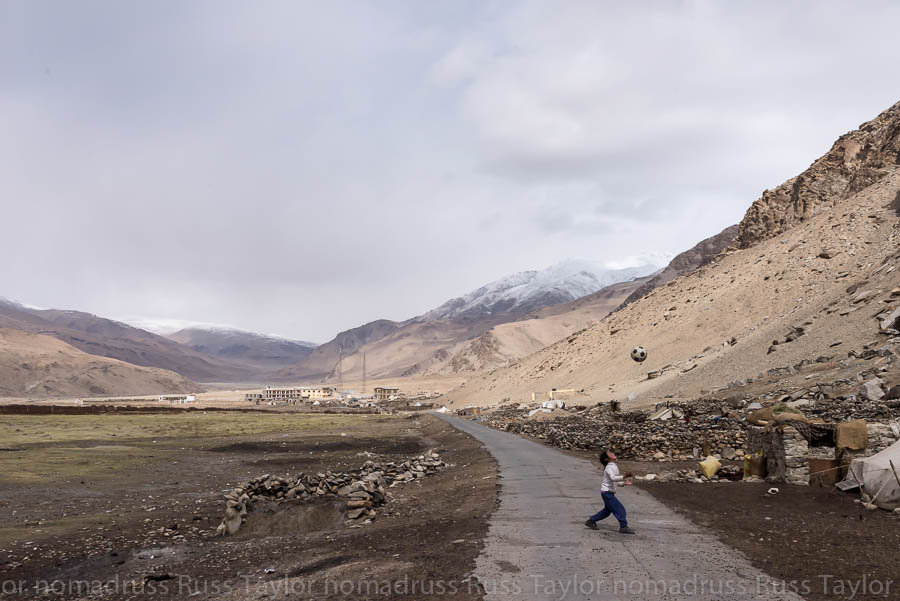
A young nomad girl plays with a soccer ball on the road leading through the settlement of Puga

A boy carries water to the family tent
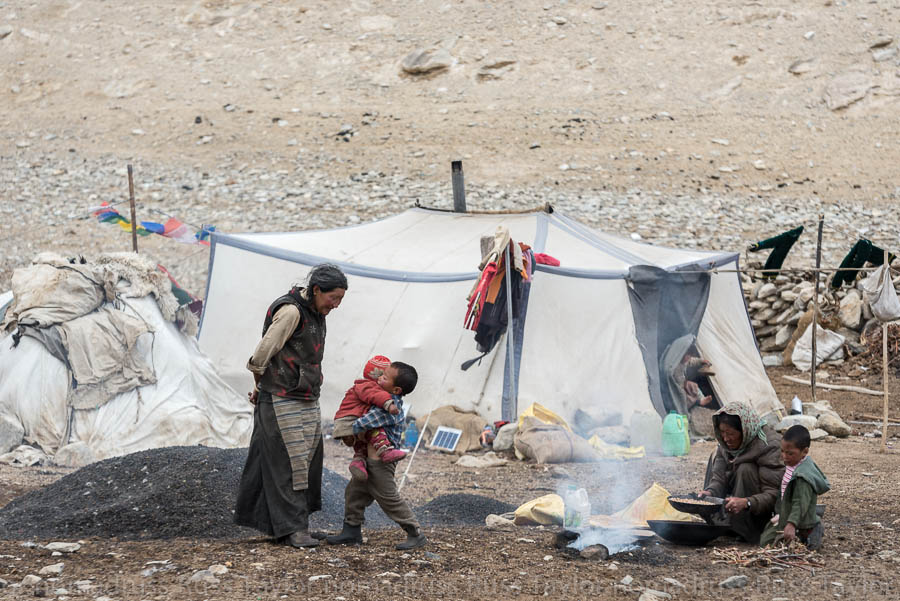
A woman roasts barely over the fire, with family members outside their tent

A woman prepares salt tea, while her daughter looks after her child

A elderly woman shares a tender moment with her granddaughter as her husband sits nearby

A young Tibetan boy

A woman and her child

Belongings inside a nomads tent

A woman adjusts a tent pole for the wind while her son plays with an old bike tire
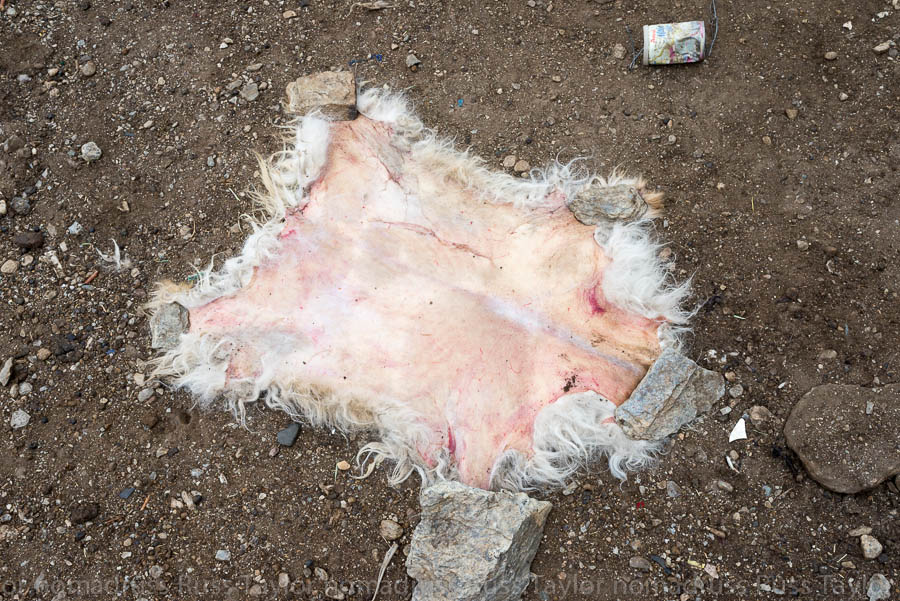
A goatskin dries on the ground outside a tent

A lunch of rice, potatoes and yak meat

The ubiquitous Indian game of cricket has made it to the high plateaus

A Tibetan horse
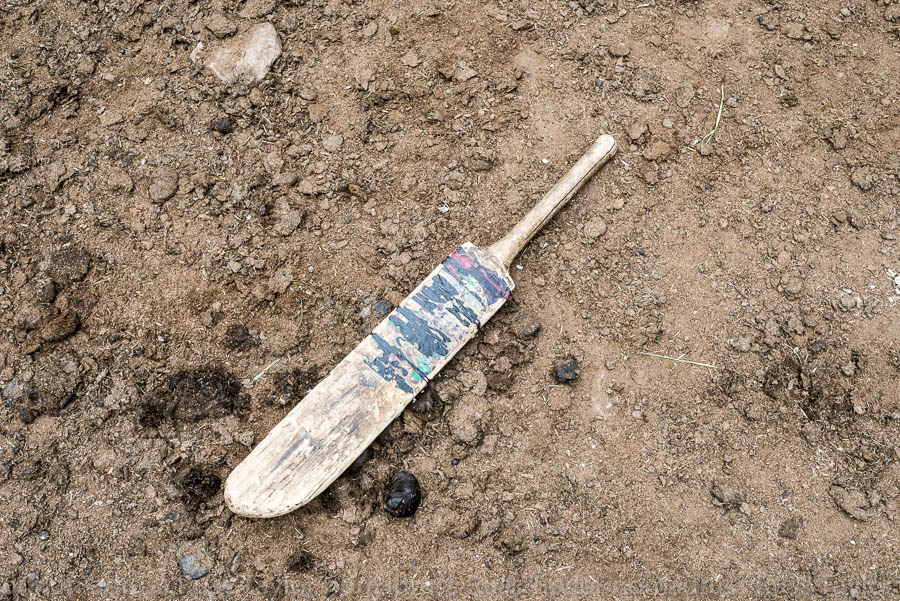
A cricket bat

A goat’s leg
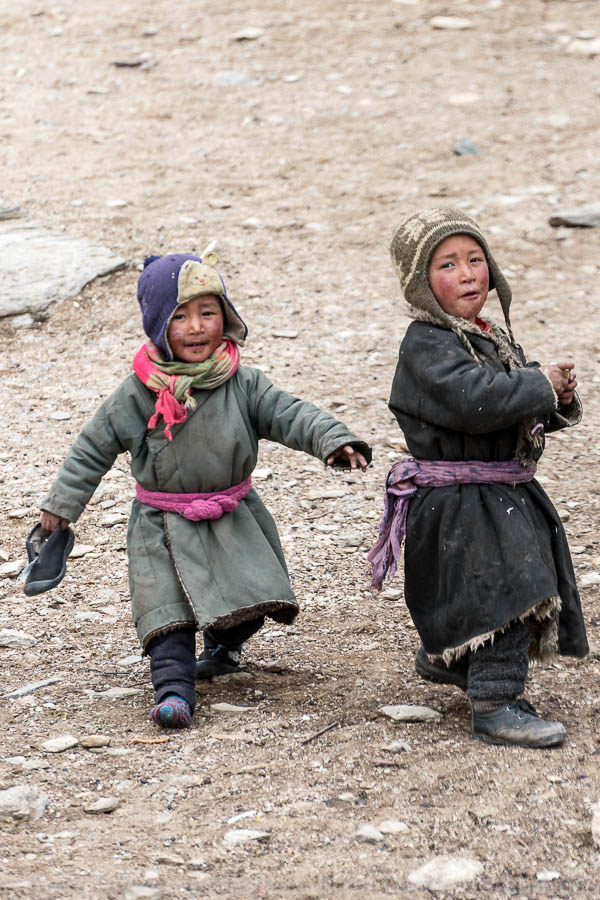
Tibetan boys in the village of Puga
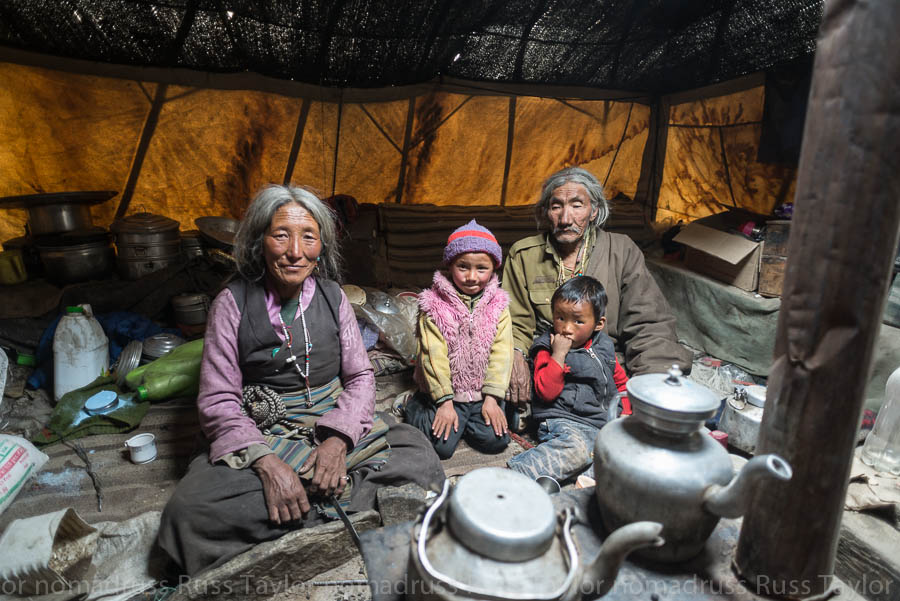
Grandparents and grandchildren in a family portrait
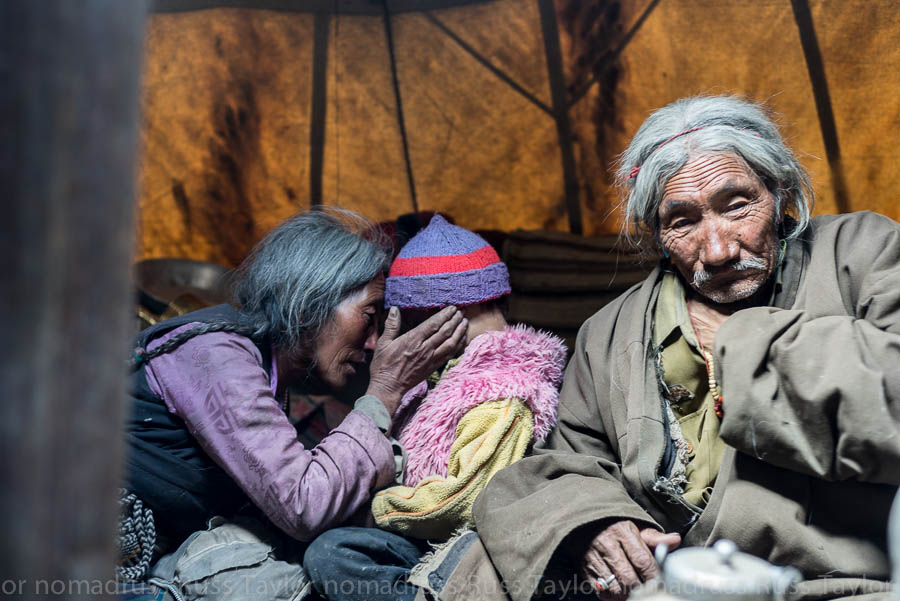



















Nice.I Shall explore this link. But, what work do they do?
They’re nomadic shepherds…
Each of your photos tells a poignant story.
Thanks so much lulu!
It seems an extremely difficult life (although beautifully photographed), gladdened only by the joy of having the children. Are they nomadic for reasons of climate and geography, or because of persecution by ethnic Chinese? Also, do they travel as a nuclear family, or in larger groups?
They are nomadic for historic reasons probably unknown from ancient days. Raising goats for pashmina and sustenance is actually quite lucrative. They are in Ladakh, rather than the Tibetan side, due to Chinese pressure. They always travel as larger groups of families, usually 10-15 family units these days. While in the past they always traveled by yak, today they sometimes rent lorries to carry their goods.
Thanks for the prompt and detailed response. Wonderful post! 🙂
Thanks!
Incredibly wonderful photos! The light and the kindness in the people’s faces is magical.
Thanks Angeline, I appreciate the kind words!
The whole story is beautiful but that couple with granddaughter portrait is breathtaking!
Thanks! I was glad to catch such a tender moment…
What a beautiful place Tibet is. In hope that they can return to their own country one day soon.
Yeah, it’s a tough situation, they did receive refuge in India, but they don’t officially own their land or have full rights. It’s a tough situation to be in.
Yeesterday, I was talking to a colleague and said the Tibetans are an indigenous people, and these photos show that. They remind me again of the Hopi, and also of photos I’ve seen of Nigerian villages. Despite oppression and colonialization and environmental degradation I firmly believe that the people of the earth are the only hope and future for the earth. Thanks for sharing your experience.
Historically the border has been porous and Tibetans and Ladakhi’s crossed the border, and Tibetans can still cross to a certain point. I think the people of the earth understanding the Creator of the earth is the only hope for the future.
Your pictures document daily life of these people in a beautiful and personal way. You obviously gained their trust and respect. Where were the men this day? Your header portrays a one of kind moment.
Thank you for the kind words. We passed through this village at mid -day and most of the men were out with the herds.
Wonderful photos, especially that moment with the elderly women and her granddaughter.
Difficult life it may be to us, but I daresay they know no other and so are used to hardship.
They have all the important things in shelter, food, clothes, animals………..and more importantly, family. Their kind of hardship would most likely be separation from family, illness and loss of herds.
Life is what you make it. It’s the little moments of joy and laughter that make life so full, not how much is in your bank account.
Their bank accounts are a lot better than most people think. Those goats fetch about 8000 rps ($150) apiece. And while I hear people talk about how poor people in India sometimes are, I usually don’t see it, I see all the richness of their lives, family, time, etc.
Another fantastic collection of photos! I particularly like the photo of the child carrying the water. From it I can hear the heavy plodding of the boy’s solitary footsteps, free of any noise pollution. I can feel the sting of the cold, humid air on the lining of my nose. I can sense the urgency to get indoors that such weather brings. A real gem!
I appreciate hearing the visceral effects of that photograph! Thanks for sharing your thoughts, as always!
Wonderful series of photos, very poignant.
Thanks David!
super!
Thanks Dominik!
In the end it is relationships. Thank you Russ for reminding us through your photos. Beautiful as always. The little snotty boy made me chuckle.
Thanks for stopping by and taking the time to share your thoughts!
Beautiful people all around the globe..I will never cease to be amazed by wonderful humanity..
Thank you for sharing these with us all!
I’d like to teach the world to sing in perfect harmony…
🙂
Very impressive shots!
Appreciate that!
Reblogged this on Oyia Brown.